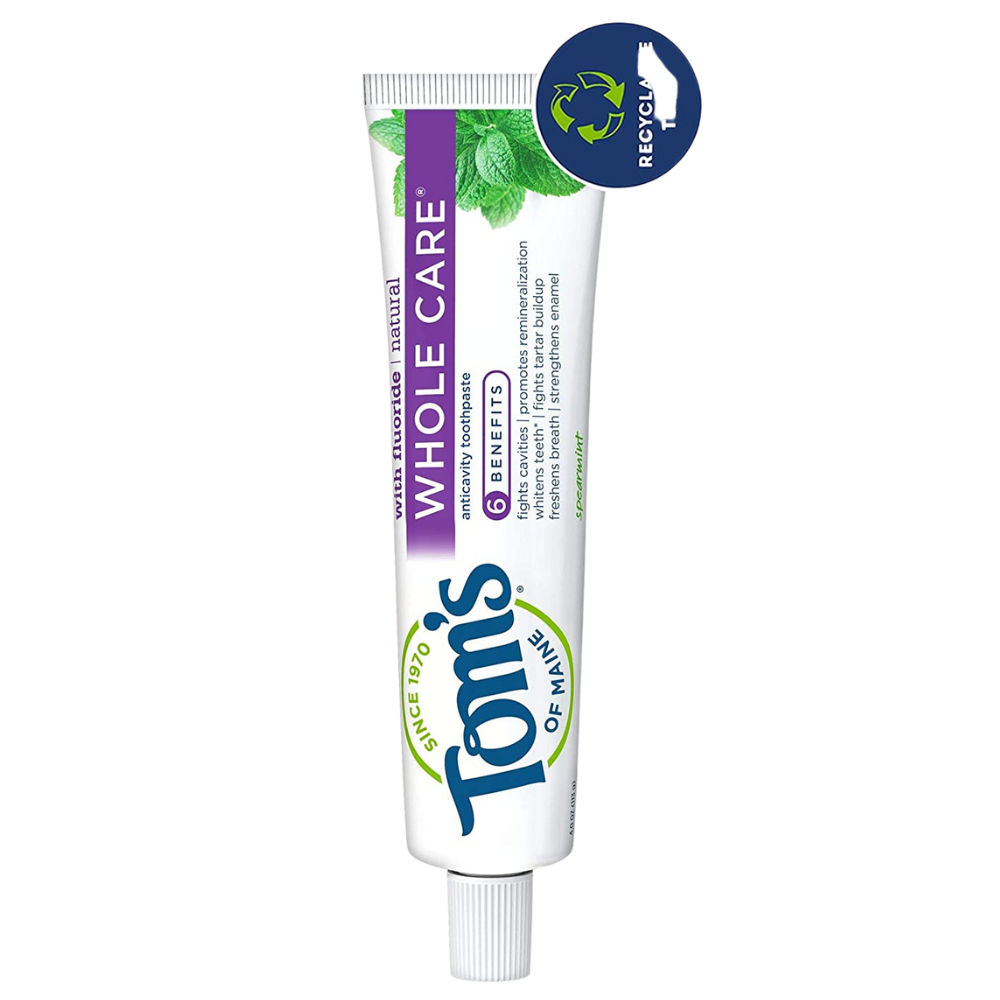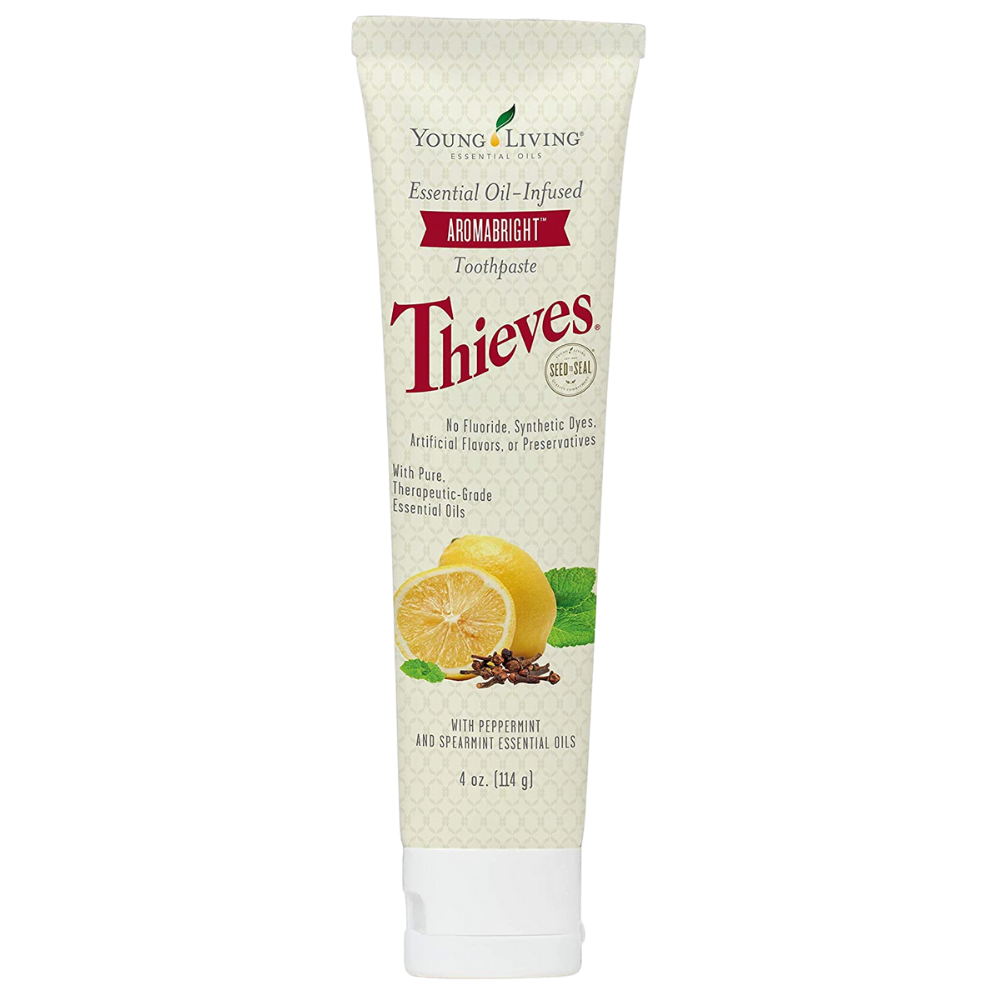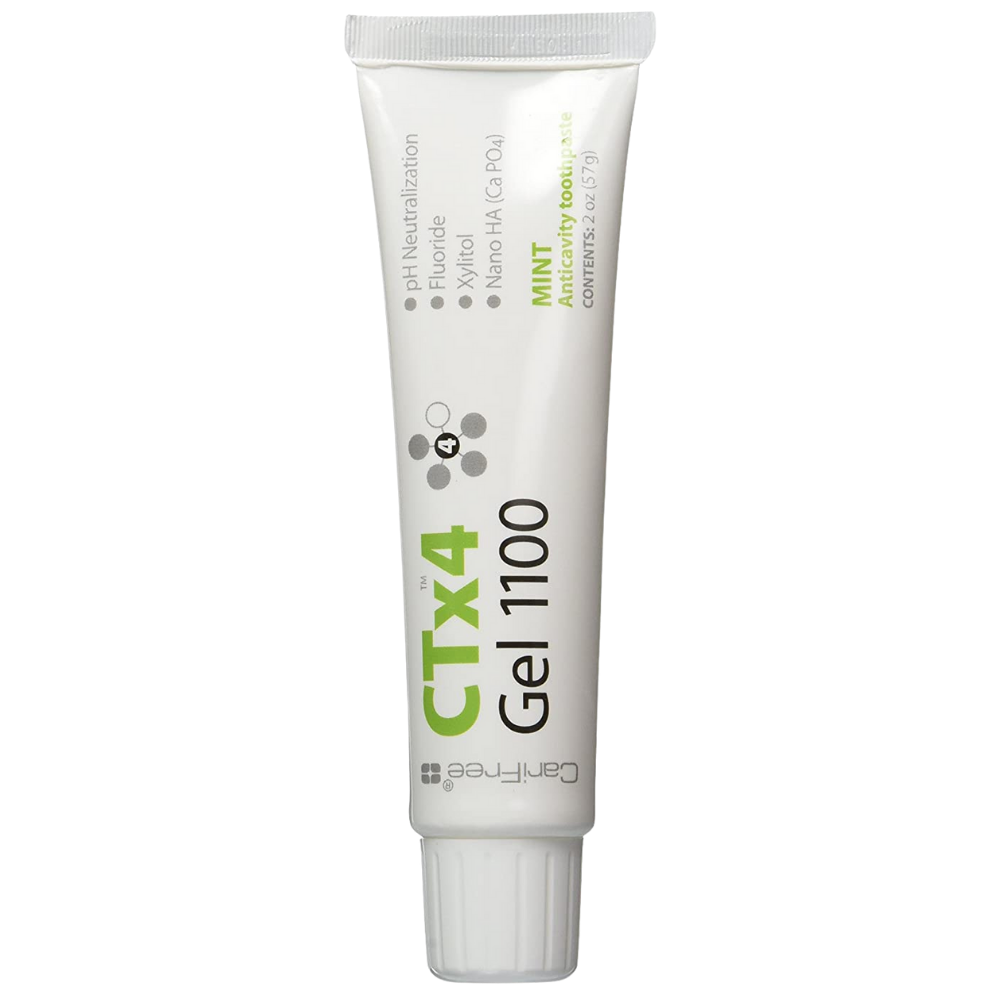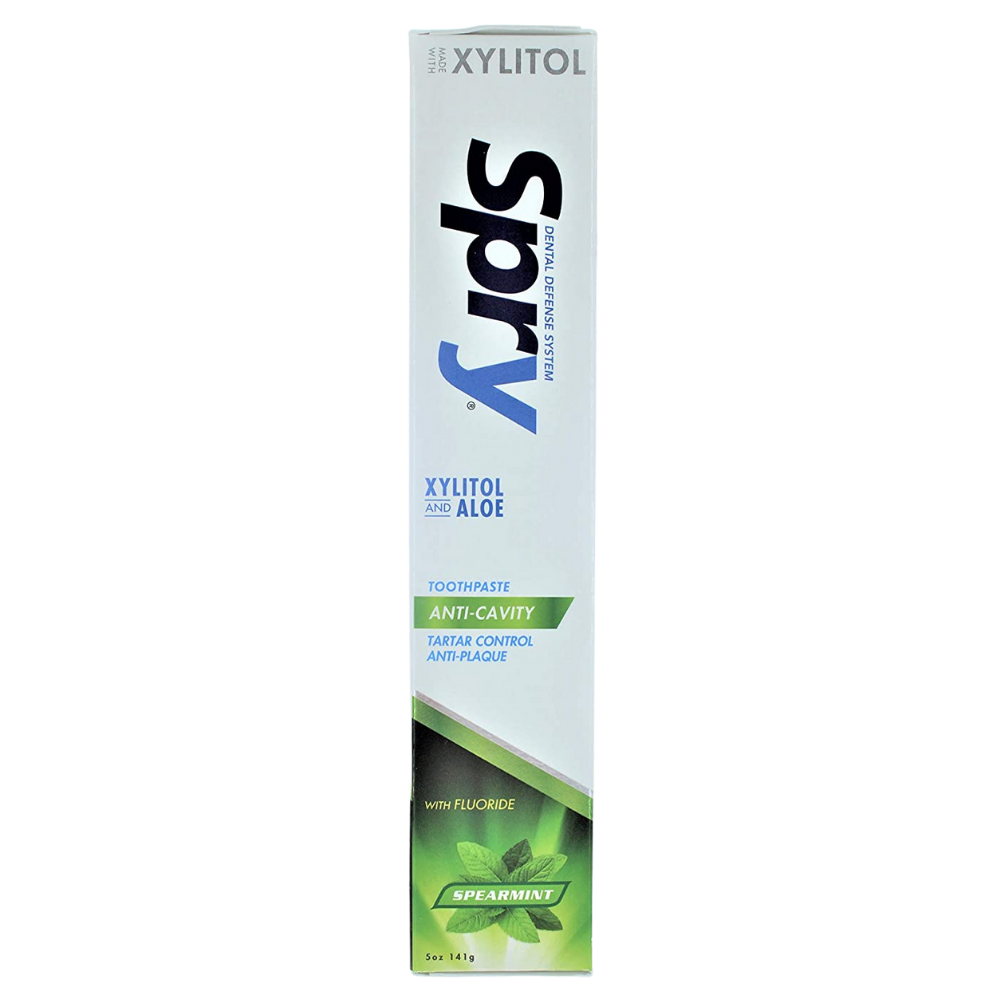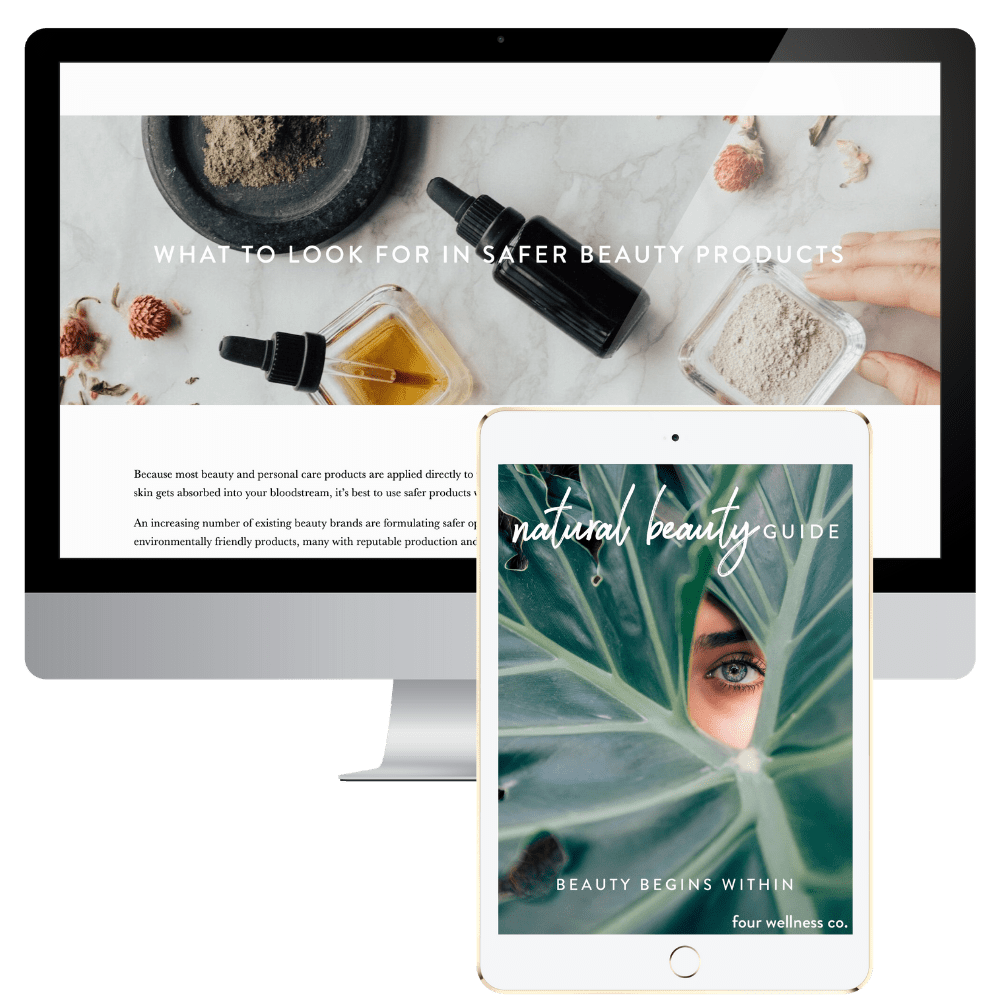Your Holistic Approach to a Healthy Mouth
Guest post by Carrie McHill, BSDH, EPDH
You want clean products for your home, your body, and your health… but what about your mouth?
There seems to be a significant gap between mainstream dentists and a holistic approach, which is increasingly coveted by patients across the globe.
But what are you supposed to believe? And what is actually the best for your mouth? The natural products found in drugstores, on Pinterest, or homemade remedies that are supposed to reverse cavities and gum disease?
As a dental hygienist, I know that different products are recommended for different patients. What works for one person isn’t going to be the best fit for another person. Whatever you want to do, dental professionals are there to help you make the decisions that best suit your goals, including maintaining a holistic approach to dental care and oral health.
Let’s talk about flouride
Usually, when patients request a more natural oral hygiene regimen, they mean products sans fluoride.
I’m not here to convince you to use fluoride. If you don’t want to have fluoride in your dental products (for example, if you’re concerned about the possible health effects of ingesting trace amounts of it over time), that decision is completely up to you.
I can tell you that the research shows that fluoride, in water and in dental products, significantly lowers the incidence and prevalence of cavities across all demographics. Fluoride works by giving the teeth minerals in order to make them stronger and more resistant to the acidic byproducts coming from the bacteria in your mouth.
But at the end of the day, it’s not just about fluoride.
Your mouth is an ever-evolving environment. Your saliva creates a pH. Then what you eat changes that pH. The food choices you make affect bacterial makeup, pH, and everything else that happens in your mouth.
In holistic dental care, we want to help stack the good things in your favor. Fluoride is just a part of that equation.
Good things for our mouth are:
healthy foods (fruits and vegetables)
reducing carbs or eating them with a protein (they break down into simple sugars)
fluoride
xylitol
having good homecare (brushing, flossing, rinsing, waterpiking, etc.)
having teeth in correct alignment
removing decay
restoring any teeth damaged due to disease or fracture
Bad things for our mouth are:
high amounts of sugary or acidic foods
not brushing/flossing
having misalignment or bite problems
not using products that help the oral environment
not seeing a dentist to be evaluated for gum disease and decay
Whether you like fluoride or you don’t, we just need to make sure that the good factors outweigh the bad. If not using fluoride is something that’s important to you, all we need to do is make sure we’re increasing all the other things in order to help keep the bad bacteria under control.
If you prefer not to use fluoride…
Whatever your reasoning behind not wanting to use fluoride, you’ll want to use other ingredients that are helpful to your teeth and gums.
Xylitol is a natural, sugar alcohol sweetener that is used in many dental products in place of fluoride. Xylitol works because the bacteria in your mouth can’t metabolize it. It essentially wears out the bacteria so it can’t release the acid byproduct like it does with regular sugars. Erythritol, another sugar alcohol, has many of the same excellent properties that xylitol has.
You can find xylitol or erythritol by itself at health food stores, but you can also find products utilizing its great properties like toothpaste, rinses, lollipops, mints, gum and many others.
If you do use it as a sugar substitute, be careful of the amount you consume. With too much (more than 7 grams at a time), it can start to cause GI upset. This doesn’t usually occur when consuming it for oral health, but when baking it may become an issue.
CPP-ACP is also a substance that can help remineralize your teeth. It’s full name is casein phosphopeptides-amorphous calcium phosphate and it helps reduce demineralization caused by acid, bacteria, and plaque retention. It can be found in MI Paste which is fluoride-free. Be careful though, the casein protein is derived from milk so if you have dairy allergies, this may not work for you.
How PH plays into your oral health
When evaluating which products are going to best address your dental care needs, we need to know what your needs actually are. That means we need to know about pH.
PH is a scale that measures the acidity or alkalinity of a solution; 0 being extremely acidic, 7 being neutral, and 14 being very alkaline, or basic. Lemon juice is very acidic, at about 2.0. While Drano is extremely basic, at 11. Pure water is neutral, at 7.
Normal saliva in the mouth is between 6.2-7.6, depending on what type of saliva it is (what gland it is excreted from) and what the mouth has consumed.
Your mouth should be more basic than acidic. When your mouth is acidic, it leads to decay and gum disease. These conditions occur because the bacteria in your mouth that thrive in an acidic environment cause these diseases.
S. mutans, a bacteria that contributes to the development of cavities, can continue to develop anywhere from 2.5-5.5. Bacteria that cause gum disease are significantly influenced by the pH in the mouth.
So, when looking for a natural product, we must be aware of the pH of the product.
Dental products and PH
Most over-the-counter products, like Crest or Colgate, have preservatives added to the solution to maintain shelf-life.
These preservatives inherently lower the pH of the product to a more acidic level.
While they might have ingredients that are good for your teeth, like fluoride, the uptake of those healthy ingredients is limited because your mouth is in an acidic environment. That’s why pH is so important.
If the pH of a dental product is high, not only does it prevent the bacteria from proliferating in the mouth, it also allows your teeth to remineralize and uptake fluoride at a more effective level.
Natural dental care products to look for
This section contains affiliate links, which means we may earn a small commission on your purchase, at no additional cost to you. These are Carrie’s favorite products she uses & recommends!
Tom’s of Maine non-fluoridated toothpaste
I recommend this toothpaste to people who want a more natural alternative to the typical toothpaste. It’s a natural toothpaste that is widely available at most drugstores, unlike the other recommendations listed below.
Studies show that the non-fluoridated version of the toothpaste inhibits bacteria just as well, if not better, than other versions of toothpaste with fluoride.
Tom’s of Maine is a brand built on the desire to have products free of artificial flavors, fragrances, sweeteners, colors and preservatives.
Usually, when patients have a sensitivity to a dentifrice, Tom’s of Maine is a good alternative to see if it was an ingredient in a specific toothpaste.
Young Living Thieves Aromabright toothpaste
One of my patients told me about this toothpaste and asked me what I thought, which prompted me to do some research. And what I found was a pleasant surprise!
Young Living’s Thieves toothpaste actually has some amazing benefits for your teeth. It is fluoride free but it contains xylitol.
One of the active ingredients is clove oil. Clove oil contains eugenol, which is an antibiotic and anesthetic. You can use a combination of clove oil, with other essential oils, to treat extraction sites, dry socket, or mucosal trauma. It makes it a great ingredient to help reduce diseases like gingivitis and periodontitis.
The research shows that Young Living toothpaste stands up to mainstream toothpastes when it comes to antibacterial effects, making it a great natural alternative.
CariFree products
This is my favorite line of dental products.
CariFree was developed by a dentist looking for something that not only helped reduced cavities, but also acted by using other mechanisms like xylitol, pH, nanohydroxyapatite (helps remineralize enamel) and sodium hypochlorite (bleach).
I use this toothpaste and treatment rinse every day. The pH is specifically formulated for the mouth, all the products have a pH of at least 9, allowing your teeth to regulate the alkalinity and uptake the fluoride ion.
If you prefer your products to be fluoride-free or your kids aren’t old enough to brush with fluoride, they have an unfluoridated version that still has a basic pH, xylitol, and nanohydroxyapatite.
I would recommend this to anyone, but especially people who are at high risk for developing cavities (for example, if you eat a lot of sugar, don’t have great dental homecare, have dexterity/mobility issues, autoimmune diseases, recent history of decay, have gum disease, etc.).
CariFree also contains many natural ingredients and doesn’t contain unnecessary additives.
Spry products
Spry is a dental line that has become very popular because of their use of xylitol instead of fluoride.
They have both fluoride and xylitol toothpastes so you can choose which one you prefer. Their mission is to use “the best ingredients to provide innovative, healthy, and natural toothpastes.”
Not only does Spry offer xylitol toothpaste, they also have a ton of other products designed for lowering your risk of cavities. They have lollies, mints, gum, rinses, ice chips, and sprays.
Using these products throughout the day, and of course morning and night, dramatically reduce the negative effects of bacteria in your mouth.
GI issues aren’t usually a problem with the amount of xylitol consumed with these products but that can be a side effect, if you’re eating lolli after lolli.
Natural oral health recommendations you might see
Here are some natural oral health recommendations you might see—and a dental hygienist’s perspective on them:
Coconut oil pulling
A big fad that patients have been talking about is coconut oil pulling for 15 to 20 minutes. Research has shown that this does provide benefit for patients.
Or, you could rinse with a mouthrinse for 1 minute. Either way, you’ll see some benefit.
Baking soda and lemon juice
Please, please, please do not use lemon juice on your teeth. It is so acidic, like we talked about. People use it for whitening and it basically works by removing the stained layer of your teeth. Not good to remove layers of your teeth!
Baking soda is a great way to increase pH in your mouth but it is abrasive and can damage your teeth if used with toothpaste. It does an excellent job of removing plaque and debris from the teeth, so you could potentially use this by itself as a toothpaste.
Hydrogen peroxide
Hydrogen peroxide is actually a great way to whiten your teeth and help reduce bacteria in the mouth. This is a natural solution that I would use sparingly. When this is used in dental products, the manufacturer takes great care in adjusting the concentration and percentage to ensure it doesn’t damage the teeth.
If you want to use hydrogen peroxide, you may want to talk to your hygienist and see if this would benefit you and how often you should do it.
If you’re wanting to see whitening effects, it’s much easier and quicker to use products with hydrogen peroxide that are specifically designed for whitening.
Holistic oral health take-aways
If you don’t want to use any chemicals or just want to approach your mouth in a more holistic way, there are many things you can do to help maintain good oral health.
Dental professionals shouldn’t ever have an agenda regarding your mouth (if you feel that way, find another office!). They should be able to help you attain your oral health goals the way you are comfortable doing it.
While we may love our fluoride and xylitol, maybe that’s not how you want to take care of your teeth. So it’s up to your team—you, your dentist and your hygienist—to figure out the best way to accomplish that for you!
Carrie is a full-time, expanded practice dental hygienist in Oregon. She loves to provide individual care for each patient based on their goals. She writes about dental hygiene, as well as health, fitness, and travel on her blog at thepassionfruitpost.com.
Make holistic dental care part of your natural beauty routine
Our Natural Beauty Guide (part of our Wellness Library of healthy living guides + resources) includes:
✔️ the common toxins to avoid in conventional cosmetics
✔️ how to shop for healthier beauty + personal care products
✔️ our favorite clean beauty brands + where to find them
✔️ simple tips for natural beauty and personal care—from the inside out
✔️ a checklist to build your own chemical-free beauty routine
FOUR WELLNESS TIP
Use the tips above to balance the pH of your mouth & choose dental care products that support your overall oral health.



